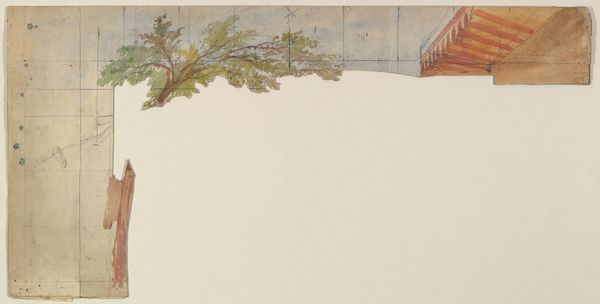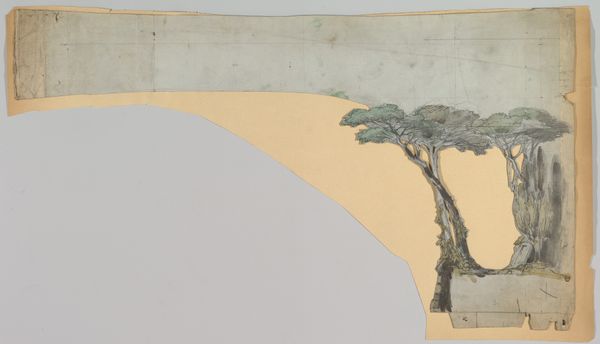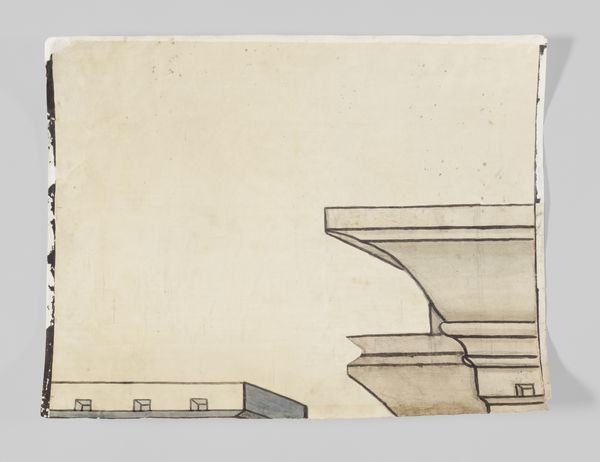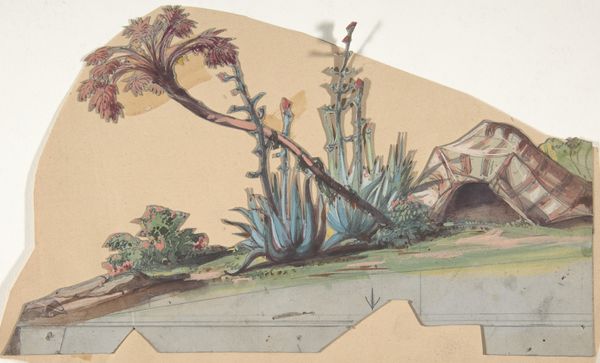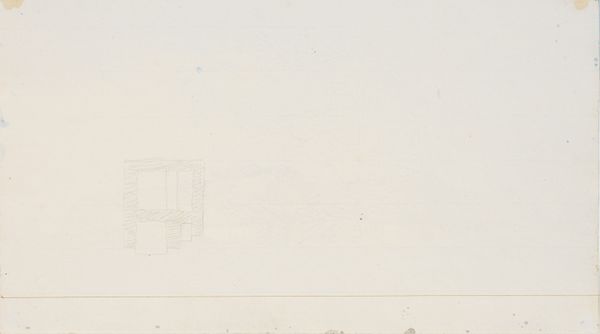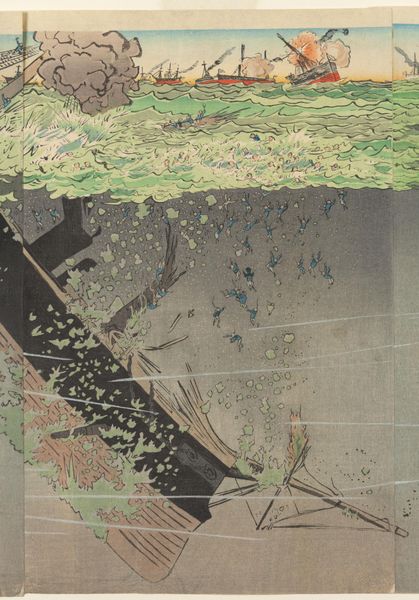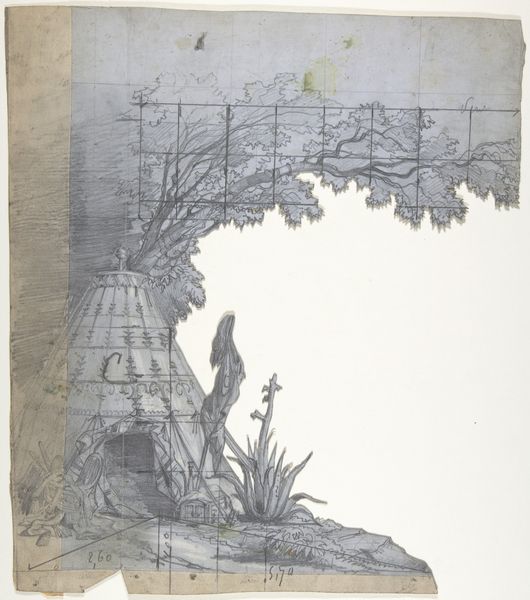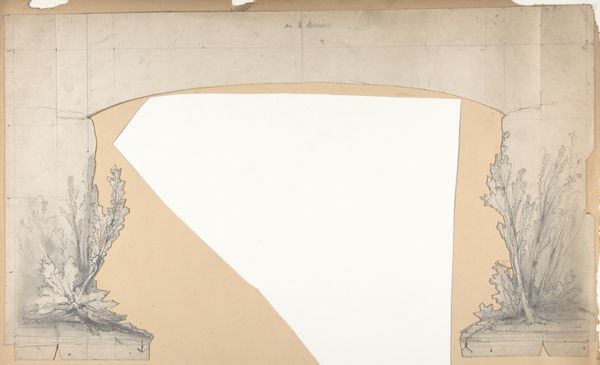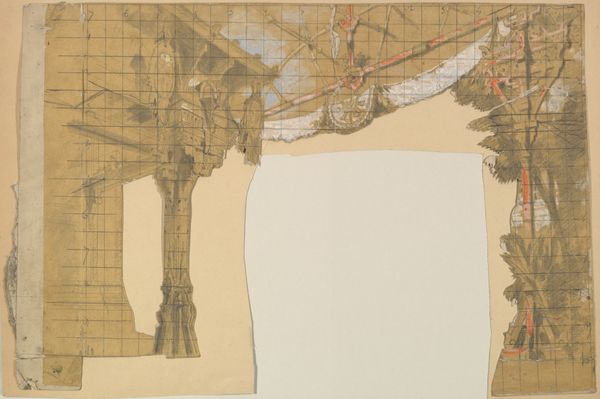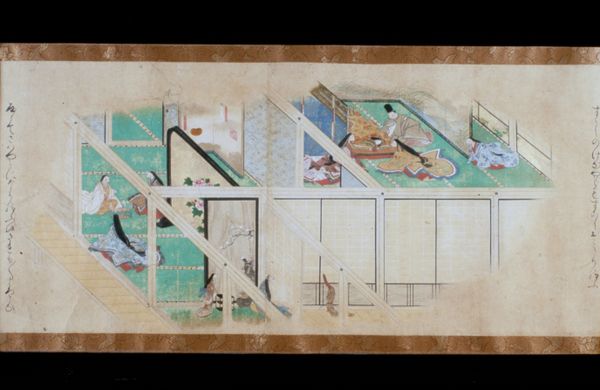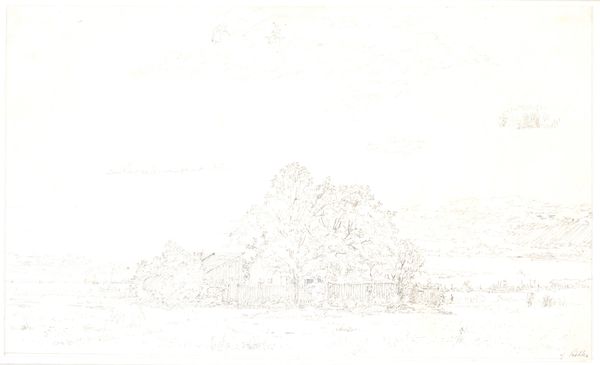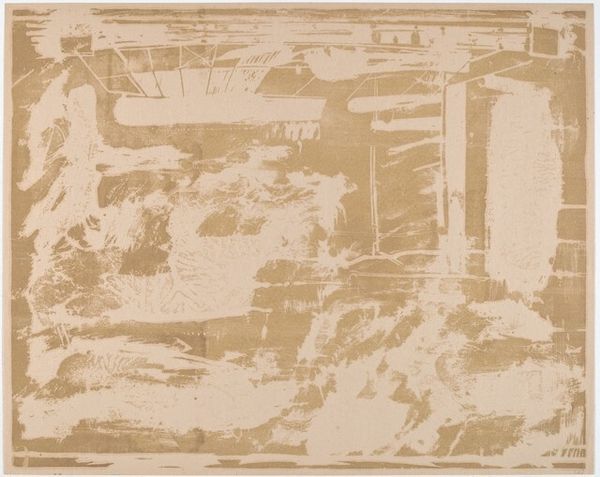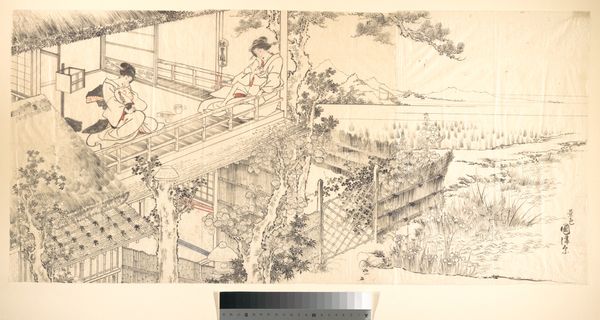
Design for a Stage Set at the Opéra, Paris 1828 - 1890
0:00
0:00
drawing, print, plein-air, watercolor
#
drawing
# print
#
plein-air
#
landscape
#
watercolor
#
coloured pencil
Dimensions: Irregular sheet: 9 15/16 x 10 9/16 in. (25.2 x 26.9 cm)
Copyright: Public Domain
Editor: This is Eugène Cicéri's "Design for a Stage Set at the Opéra, Paris," likely from the late 19th century. It's a watercolor and pencil drawing. The cutout shape gives it such a specific presence. What's particularly interesting is the almost casual nature of the under drawing combined with the lush colors on top - What jumps out at you when you look at it? Curator: What grabs me is the explicit connection between art, illusion, and social spectacle. The Paris Opéra was a vital institution – not just for performance, but as a stage for social rituals, political maneuvering, and displays of wealth. Think about how stage design at the time served to transport audiences, often into idealized landscapes. Cicéri's work gives us a peek behind the curtain, revealing the mechanics of creating these illusions. Editor: So, it’s not just a pretty picture, but a comment on the role of the Opéra itself? Curator: Precisely. Consider the use of watercolor – a medium often associated with preliminary sketches. He uses this traditionally ‘private’ medium for a very public spectacle. And the landscape depicted seems quite generic doesn't it? Stage design often leaned heavily on romanticized visions of nature, masking the rapidly industrializing urban environment of Paris itself. Are we being transported away from a reality we don’t want to face? Editor: That's a fascinating point. The somewhat 'unreal' or generalized nature of the landscape probably resonated differently then. It becomes a form of escapism, even social commentary. Curator: Exactly! By understanding the cultural and historical context, this drawing offers insights into not just theatrical design but also the complex social dynamics of 19th-century Paris. How do we, as viewers, become implicated in these spectacles? Editor: It makes you wonder how many other seemingly simple stage designs held similar layers of meaning. Thanks, I'll definitely look at these kinds of works with fresh eyes. Curator: Likewise, thinking about art in its specific cultural context, not in a vacuum, can drastically shift how we perceive both the artwork itself and the society that created it.
Comments
No comments
Be the first to comment and join the conversation on the ultimate creative platform.
